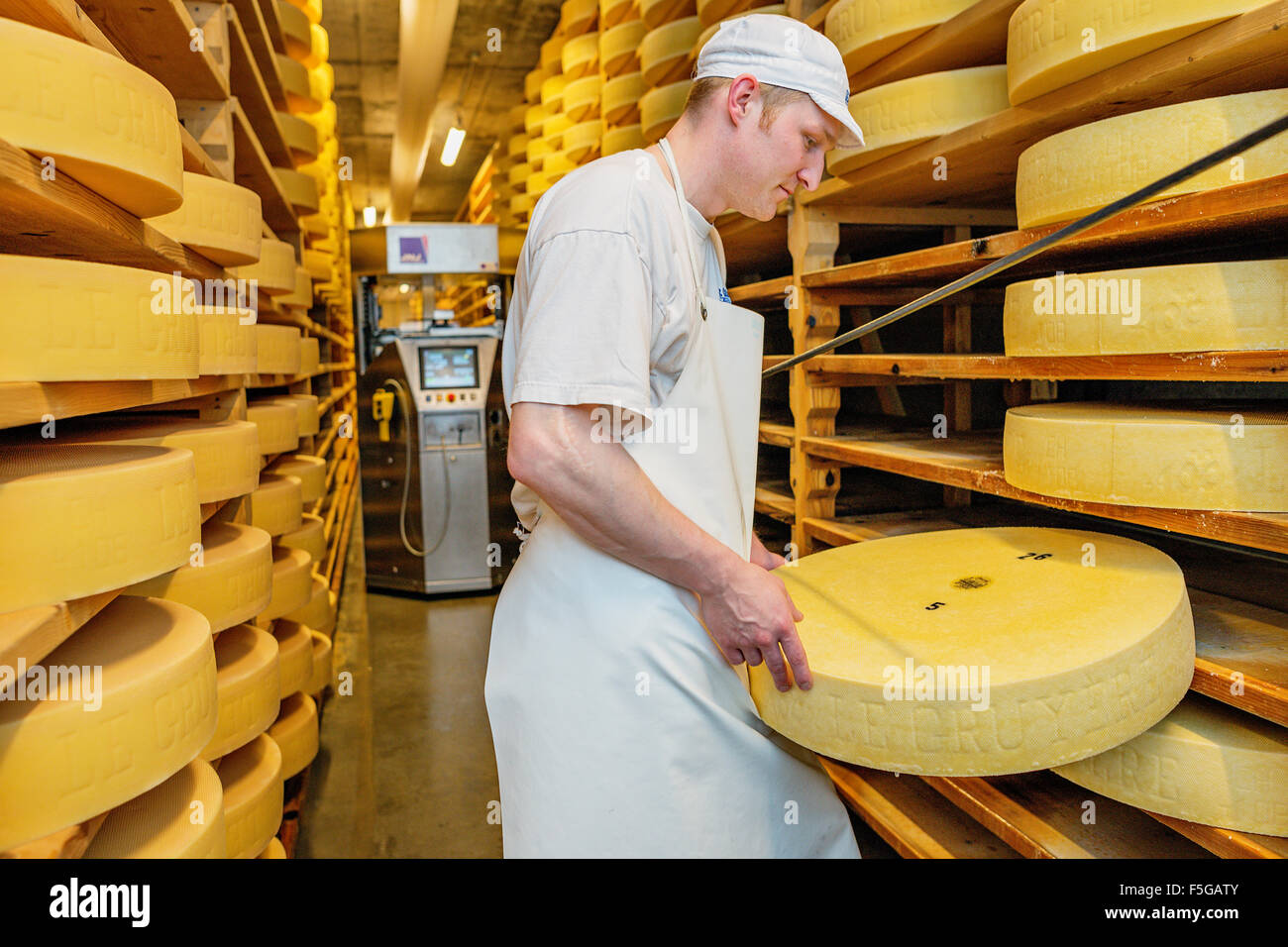Understanding the Scientific Research Behind Cheese Manufacturing: From Milk Option to End Product
The elaborate procedure of cheese production begins with the cautious choice of milk, a selection that greatly influences the last item's taste and structure. Recognizing the crucial duty of microorganisms in fermentation discloses just how these microbes change lactose right into lactic acid, a crucial component in establishing the cheese's character. cheese store melbourne.
Milk Choice Process
The selection of milk is a crucial action in the cheese manufacturing process, as it directly influences the flavor, texture, and quality of the end product. Various aspects have to be considered throughout this option, consisting of the source of the milk, the breed of the animals, and their diet plan. Cow's milk, goat's milk, and sheep's milk each have distinctive homes that add to the unique qualities of different cheese ranges.

Additionally, the dietary content of the milk, affected by the pet's diet plan, can modify the cheese's final features. Premium milk, sourced from healthy and balanced pets, makes sure a remarkable cheese item, highlighting the relevance of rigorous top quality control measures in the milk selection process. Thus, careful consideration in milk selection is vital for successful cheese production.

Duty of Germs in Fermentation
Following the mindful choice of milk, the fermentation process plays a crucial role in cheese manufacturing, where bacteria are introduced to change the milk into cheese. The key function of these microorganisms is to convert lactose, the sugar existing in milk, into lactic acid. This acidification not just alters the pH of the milk but additionally plays a crucial function in taste development, appearance, and conservation of the end product.
Lactic acid microorganisms (LAB), such as Lactococcus and Streptococcus varieties, are frequently made use of in cheese production as a result of their ability to prosper in milk and their contribution to the fermentation process. The metabolic tasks of these bacteria cause the manufacturing of various metabolites, including taste compounds and antimicrobial compounds, which hinder spoilage organisms and pathogenic germs, therefore enhancing cheese security.
In addition, the fermentation process affects the total qualities of the cheese, including its fragrance, preference, and texture. Different stress of microorganisms can impart unique tastes and add to the distinct profiles of different cheese kinds. Thus, the choice of microbial societies is an essential step in attaining the wanted cheese top quality and consistency.
Coagulation and Curd Formation
In the cheese manufacturing process, coagulation notes an essential transition from liquid milk to solid curds. This makeover is primarily induced by the enhancement of rennet, an enzyme that acts upon casein, the major healthy protein in milk. When rennet is introduced, it helps with the aggregation of casein molecules, bring about the development of a gel-like structure. This procedure is typically matched by the acidic environment created by lactic acid bacteria, which better help in coagulation by decreasing the pH of the milk.
The resulting curds are formed as the fluid whey begins to separate. Aspects such as temperature, the quantity of rennet made use of, and the moment permitted coagulation are important in determining the texture and top quality of the curds. Greater temperature levels and longer coagulation times generally generate stronger curds, suitable for harder cheeses.
As soon as curds are developed, they are cut right into smaller sized pieces, permitting whey to get away a lot more efficiently. This action is crucial, as it affects the dampness web content and total attributes of the final cheese item. Appropriate management of coagulation and curd formation is crucial for attaining specific cheese designs and preferred image source flavor accounts.
Aging and Taste Development
After the curd has been developed and whey has actually been drained pipes, the following phase in cheese manufacturing is aging, likewise called growth. This crucial procedure significantly influences the cheese's final taste, appearance, and fragrance. Throughout aging, various biochemical and microbiological improvements happen, influencing the total sensory profile.
The aging environment, including temperature and humidity, plays an important function in taste advancement. Enzymes and microorganisms moved here existing in celebrity facilitate the break down of proteins and fats into smaller molecules, resulting in the development of amino acids, fats, and unstable compounds. These makeovers add to the intricacy of taste and scent, with distinctive accounts emerging based on the specific cheese range.
Furthermore, the duration of aging is crucial; shorter aging periods normally generate milder tastes, while longer growth cause more robust and nuanced profiles. Elements such as the milk source, cheese kind, and certain aging strategies further improve the variety of tastes generated. Inevitably, aging is a fragile equilibrium of time, ecological problems, and microbial task, finishing in the one-of-a-kind features that specify each cheese selection.
Top Quality Control in Cheese Production
Making certain high requirements throughout the cheese manufacturing procedure is vital for delivering a quality item that satisfies consumer expectations - cheese store melbourne. Quality control (QC) encompasses various phases, beginning with raw milk selection to the last aging process. Each stage calls for precise focus to detail to avoid contamination and ensure consistency
Throughout milk choice, manufacturers need to assess aspects such as fat content, pH degrees, and microbial quality. Normal testing for somatic cell matters and microbial tons is essential to ensure the milk's viability for cheese making. In the manufacturing phase, QC actions include monitoring the temperature level, acidity, and rennet activity, which significantly influence appearance and flavor.
As cheese visit this website grows, continuous sensory analyses and lab evaluations are conducted to evaluate taste development, structure, and total quality. Any kind of deviations from established criteria necessitate restorative activities to maintain product honesty.
Furthermore, paperwork and traceability are vital parts of efficient quality assurance, enabling manufacturers to track celebrity from ranch to customer. By implementing durable QC protocols, cheese producers can not only boost product high quality yet additionally construct customer trust, ensuring their place in an open market.

Final Thought
In final thought, the science of cheese production includes numerous essential stages, each significantly influencing the end product. The cautious option of milk, the necessary function of microorganisms in fermentation, the change of liquid milk into curds through coagulation, and the aging procedure collectively add to the development of one-of-a-kind flavors and appearances. Stringent high quality control gauges guarantee that each cheese selection meets well established standards, consequently enhancing customer contentment and maintaining the stability of the cheese-making practice.